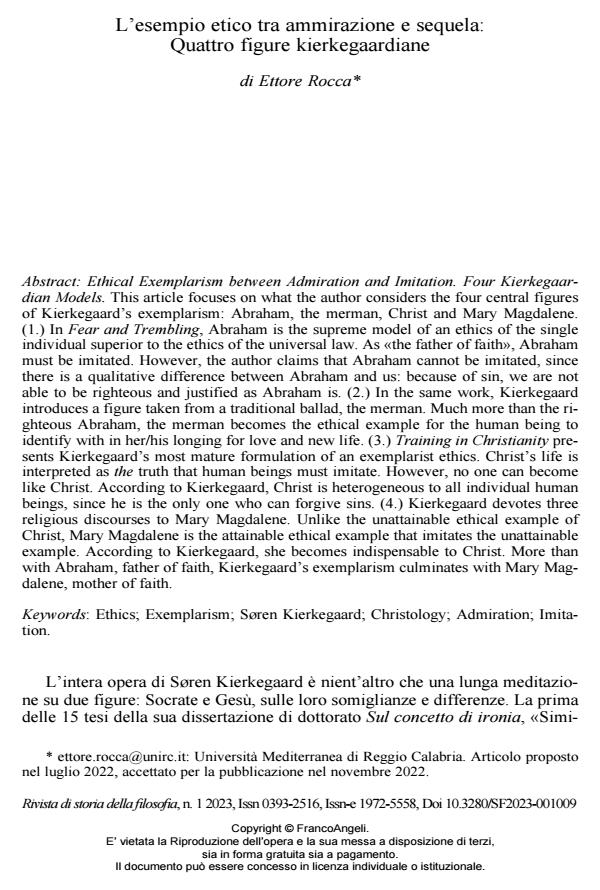Ethical Exemplarism between Admiration and Imitation. Four Kierkegaardian Models.
Journal title RIVISTA DI STORIA DELLA FILOSOFIA
Author/s Ettore Rocca
Publishing Year 2023 Issue 2023/1
Language Italian Pages 14 P. 134-147 File size 209 KB
DOI 10.3280/SF2023-001009
DOI is like a bar code for intellectual property: to have more infomation
click here
Below, you can see the article first page
If you want to buy this article in PDF format, you can do it, following the instructions to buy download credits

FrancoAngeli is member of Publishers International Linking Association, Inc (PILA), a not-for-profit association which run the CrossRef service enabling links to and from online scholarly content.
This article focuses on what the author considers the four central figures of Kierkegaard’s exemplarism: Abraham, the merman, Christ and Mary Magdalene. (1.) In Fear and Trembling, Abraham is the supreme model of an ethics of the single individual superior to the ethics of the universal law. As «the father of faith», Abraham must be imitated. However, the author claims that Abraham cannot be imitated, since there is a qualitative difference between Abraham and us: because of sin, we are not able to be righteous and justified as Abraham is. (2.) In the same work, Kierkegaard introduces a figure taken from a traditional ballad, the merman. Much more than the ri- ghteous Abraham, the merman becomes the ethical example for the human being to identify with in her/his longing for love and new life. (3.) Training in Christianity presents Kierkegaard’s most mature formulation of an exemplarist ethics. Christ’s life is interpreted as the truth that human beings must imitate. However, no one can become like Christ. According to Kierkegaard, Christ is heterogeneous to all individual human beings, since he is the only one who can forgive sins. (4.) Kierkegaard devotes three religious discourses to Mary Magdalene. Unlike the unattainable ethical example of Christ, Mary Magdalene is the attainable ethical example that imitates the unattainable example. According to Kierkegaard, she becomes indispensable to Christ. More than with Abraham, father of faith, Kierkegaard’s exemplarism culminates with Mary Magdalene, mother of faith.
Keywords: Ethics;; Exemplarism;; Søren Kierkegaard;; Christology;; Admiration; Imitation
Ettore Rocca, L’esempio etico tra ammirazione e sequela: Quattro figure kierkegaardiane in "RIVISTA DI STORIA DELLA FILOSOFIA" 1/2023, pp 134-147, DOI: 10.3280/SF2023-001009